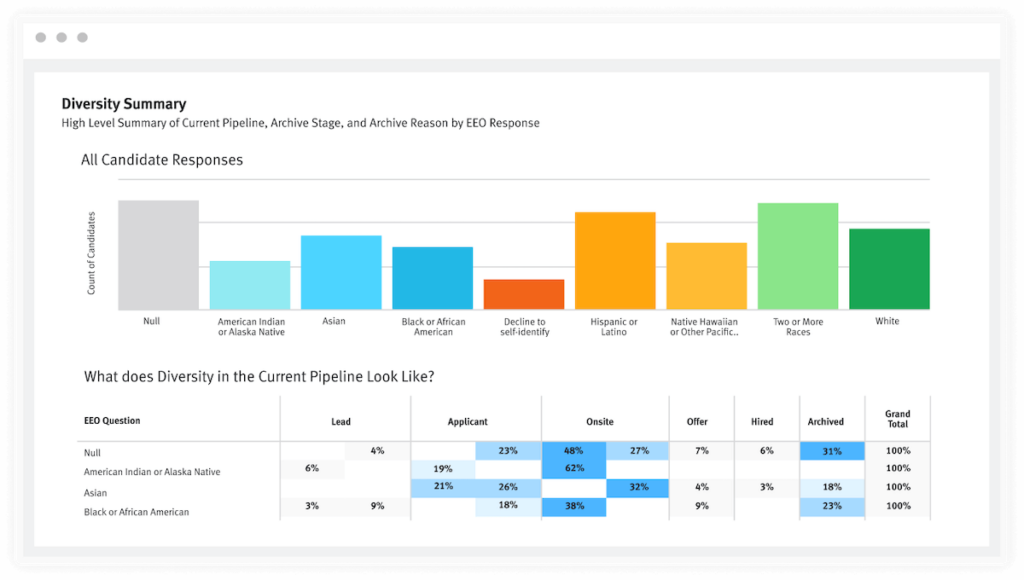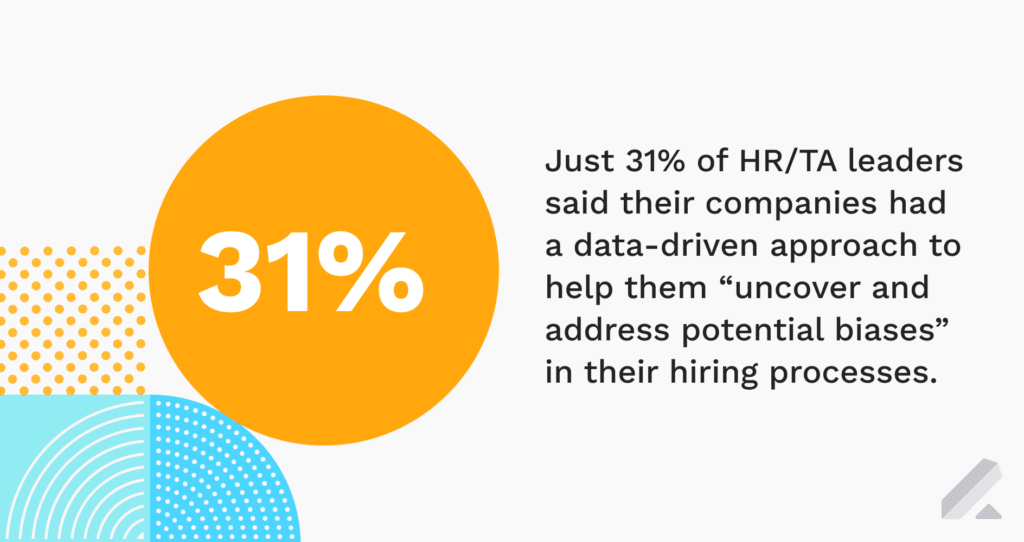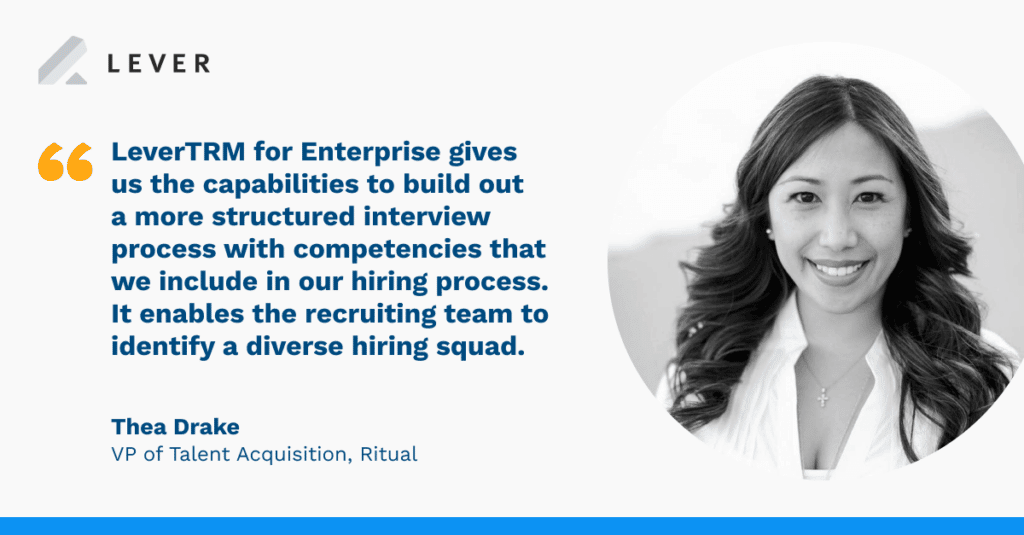If you want to diversify your workforce, chances are you’re also thinking about how you’ll strategically get underrepresented minority candidates into your recruiting process.
More than that, you might be thinking about the best ways to source diverse candidates. What platforms work the best? What language should you be using?
It can be challenging to bring in candidates with different experiences, backgrounds and perspectives without a clear path on how to do this.

Getting started with developing diversity sourcing strategies for your organization
Underrepresented minorities with a lot of experience in STEM (science, technology, engineering, and mathematics) are likely being reached out to by recruiters and sourcers who are working to diversify their companies, too.
There are specific sourcing strategies we’ve seen many recruiting orgs try when recruiting for diversity that feels disingenuous and humiliating to the person on the receiving end.
By using messaging that leads with “I’m reaching out because we care about diversity,” you’re making the recipient of this messaging feel like a token.
This is your chance to be the differentiator, this is where you can really stand out and a bring a human approach to the daunting task of sourcing for diversity.
While not perfected, these are best practices for recruiting diverse candidates we have found via trial-and-error, collaborating with other orgs and reading about other proven methods.
There isn’t a single tried-and-true way to do this, but a good start is to:
- Launch objectives and key milestones for your diversity sourcing. How will you know when you’ve made some progress?
- Get creative with your sourcing platforms and mediums. If you have been using the same platform to find your candidates it might be time to start venturing out to platforms you might not have thought of using in the past.
- Experiment with more thoughtful engagement strategies. It might be time to revamp some of those outreach templates to make them click bait worthy.

Creating goals and determining key milestones for your diversity sourcing strategies
Starting a new DEI recruiting and hiring initiative can be intimidating.
However, building out objectives and relating them to key milestones can ensure that you are able to move the DEI needle in some way.
The beauty of an objective is that it inspires you to dream big while giving you the flexibility to re-tool or re-imagine as you go along.
A big part of crafting concerted diversity sourcing strategies is understanding where the state of your DEI hiring efforts are currently.
Once you’ve aligned yourself (and those working with you), build out milestones (or OKRs — if you prefer) that will help you know that you’re moving the needle.
At Lever, we use OKRs on the People team quarterly.
By setting clear objectives and understanding the key results tied to them the entire TA team is accountable for the overall team goals and knows the steps to take to hit our goals.
Ideally, your milestones have a quantity or number associated with it so that you can objectively see the progress and report on it later on.
This can also help you assess the value of your efforts in real-time and decide if you need to pivot and go in a different direction.
It’s easy (and tempting) to build a gigantic list of milestones but try to start small initially. A focused set of milestones, though, will allow you to build momentum while a giant list of objectives may have you feeling overwhelmed.

Liaising with your sourcing specialists to ensure they know how to find diverse candidates
Once you have your milestones set, it’s time to loop in sourcer(s) and interviewers.
While this can look like a lot of work (and potentially a lot of input), this critical step will gain alignment with your key stakeholders and will also show your hiring team (your interviewers and sourcers) why you’re moving in the direction that you are.
That alignment will not only make the effort more authentic but will also help in driving inclusion throughout your organization. Additionally, that alignment will prevent you from having to re-review candidate resumes and profiles.
The key here is not to have a specific number of profiles that you’re looking to review. You aren’t going for quantity, but rather quality.
When looking for candidates from underrepresented groups, try to dig deep into their experience and their interests instead of just skimming through those details.
Looking for recognizable names of schools and companies won’t help you learn more about each individual candidate. You’re looking for what they’ve done, not where they’ve done it.
You want to start looking through the different projects that they might have owned, or the various levels of responsibility that they have in their current role. Remember, tenure doesn’t always equate to impact.
Also, don’t forget other clues beyond their resume. Dig into the different areas of the business they might have impacted through their companies social media or blog presence.

Looking beyond LinkedIn to get really creative with your diversity sourcing strategy
We love using LinkedIn for talent sourcing here at Lever, and I can say that LinkedIn is likely the site I frequent most when looking for candidates.
But, when looking to bring in underrepresented minority or non-traditional background candidates who are interested in the work that you’re doing and the culture that you’re promoting you can’t just be another InMail reach out.
While it may be the easiest way to reach out, it’s also easy for your InMail to get lost in the shuffle (i.e., among other employers’ messages) and look like any other recruiting attempt.
Instead, simply use LinkedIn as your jumping-off point to filter down to the baseline requirements that you have.
You can use advanced search features to find specific (or broader) titles, levels of experience, locations and keywords and then head to over different platforms to engage.
By moving on a different platform to engage you’re also learning more about your potential candidate. While there are interesting facts about someone on LinkedIn, I would argue that most times the things that they’re passionate about live elsewhere.
Reaching out to them on other sites can also give you an advantage because it’s creative and different from what they’re likely used to experiencing thus far. It also gives you fantastic content for your customized reach outs.
There are a variety of sites that will give you further insight into the candidates that you’re looking for. Medium, Twitter, Jopwell, SquadJobs: There are several channels and social media sites you can tap into to broaden your diversity sourcing efforts.
Working with all hiring stakeholders to prioritize DEI recruiting and hiring
Diversifying your pipeline isn’t an easy feat but by taking these actionable steps, you can move the needle on how full your pipeline is with diverse candidates.
By setting measurable milestones on your sourcing initiatives, you’ll ensure that you are progressing forward and if you’re not you can easily recognize it and adjust if needed.
Learn how you can enhance your diversity recruiting and hiring and make true DEI progress with LeverTRM’s diversity surveys and dashboard. Schedule a demo today.



